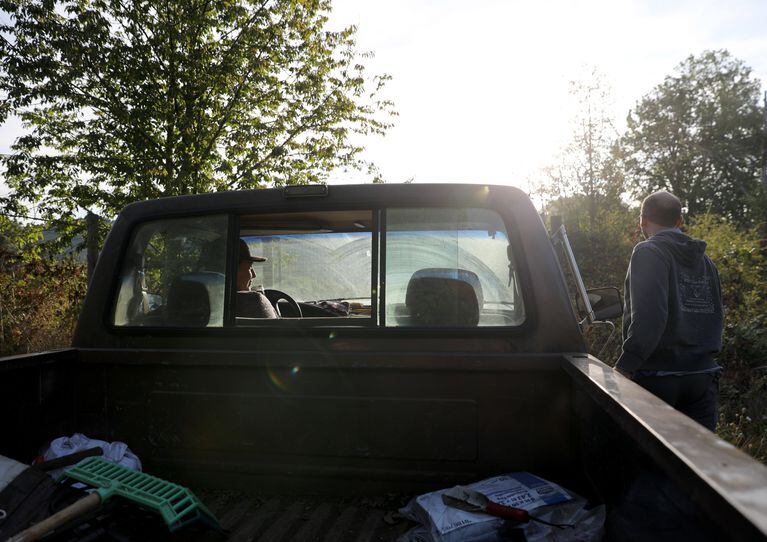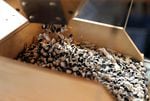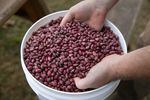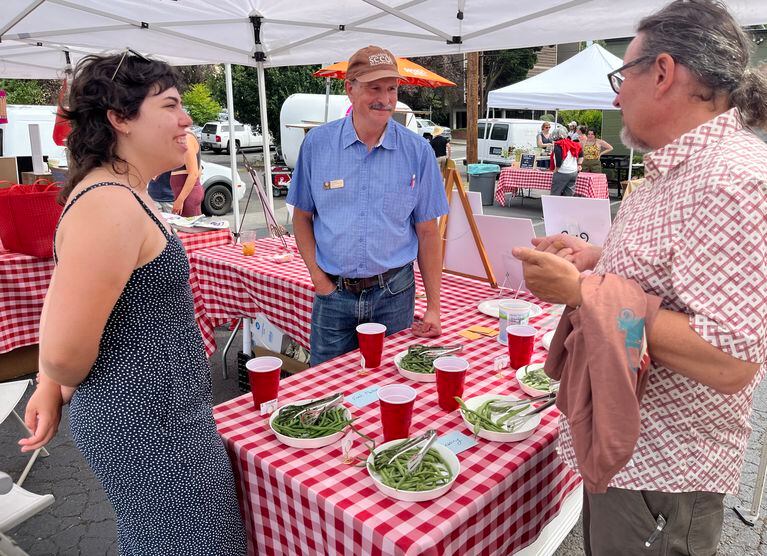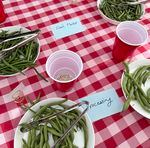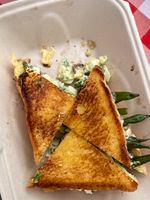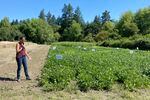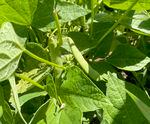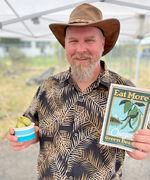Oregon’s legume legacy amounts to more than a hill of beans
The past, present and future of beans in the Beaver State
When you think of the foods of Oregon, you probably think of marionberries, craft beer and salmon. Maybe you think of tater tots and corn dogs. Unless you’re a crop scientist or an ag history nerd, you probably wouldn’t think of beans as an especially Oregonian crop, but make no mistake: some of the best-tasting — and most expensive — heirloom bean varieties have been quietly growing in Oregon for more than a century.
Oregon is the fourth-largest producer of green beans in the U.S., most of them going directly to the frozen foods market. Dry heirloom beans, on the other hand, are rare; they’ll never be the most productive plant in a field. They’re grown almost out of altruism, not just for their beauty and impeccable flavor but a duty to preserve a small piece of history.
Oregon’s earliest imported beans
Though 17th-century Northwesterners likely encountered the “Three Sisters” of Indigenous American agriculture (beans, squash and maize) through trade, beans weren’t really grown in the region until the Hudson’s Bay Company established Fort Vancouver in the 1820s. Peas and beans were not nearly as important a food as meat and biscuits on a 19th-century sailing vessel, but unlike salt pork and hardtack, uneaten beans could be planted once the ship arrived at its destination.
Cut to the 1840s, when settlers driving westward on the Oregon Trail would manifest beans’ destiny to become a pioneer staple, inextricable from life on the frontier. The Dutch oven that jangled in every wagon carried dry beans to simmer or bake in dying coals along the emigrants’ path. Though their long cooking time meant otherwise economical beans consumed a lot of precious water and fuel, inventive cooks found ways to cook beans down to a paste that could be smeared on bread, not unlike hummus.
Once they arrived, settlers would have had a few beans to choose from for their farms and kitchen gardens. Scarlet runner beans, with their bright vermilion blossoms and large purple-speckled black beans, were as popular then as they are now.
By the 1860s, beans were still mostly being grown in California and shipped up to Oregon by rail. Multiple pleas for local legumes appeared in The Oregonian, with letter writers either wondering why more beans weren’t grown in Oregon’s ideal climate or recommending specific varieties (like the Royal Dwarf white kidney bean) for cultivation.
As immigrants settled in Oregon, some brought beloved bean varieties to their new homes, like the borlotti-type Volga German Siberian that traveled with German Mennonites fleeing Russia in the 1890s. At around the same time, the North Italians who established Portland’s truck gardens and produce stands arrived with pink borlotti beans (a cranberry bean variety that originated in Colombia, not Italy). Bayo beans, a pinto-like bean originally from Mexico, became a standard sold in Portland markets.
“[A] small portion of the wheat belt of Washington, Oregon, and Idaho is well adapted to the production of beans,” noted one agricultural bulletin in 1913. With the intent of reclaiming eastside lands whose arability was compromised by weed infestations, the top three varieties then promoted by the United States Department of Agriculture were Little Navy (also sold as Prize Winner, Banner Leafless or Prolific Tree), the Lady Washington and the pinto-like Red Miner.
If picked early enough, most dry bean varieties have an edible pod, but green beans are grown specifically for their fresh, unripe pod (the beans inside the pods are just seeds). West of the Cascades, green beans, too, were planted nearly as soon as the soils were turned on new land claims. The green and bushy Oregon tree bean was one vigorous variety that promised to bring profits to anyone who grew it.
Early vegetable canneries that cropped up in the Willamette Valley at the turn of the 20th century put up green beans like Kentucky Wonder, and growers soon introduced even more prolific and flavorful green bean varieties. Soon, however, one green bean would come to rule them all: Blue Lake.
Introduced to the Willamette Valley in the 1920s, within a decade Blue Lake was the top-selling product of Eugene Fruit Growers Association. By World War II, Alderman Farm in Dayton, Oregon, employed 300 year-round workers and upward of 3,000 (largely teenaged) pickers during the green bean harvest. Women and teens were recruited to pick up the slack when the war both drove need for food and left a gaping hole in the labor pool. Mexican braceros, Japanese internees, conscientious objectors and even German and Italian prisoners of war were sent to the fields of Blue Lake.
In 1951, Tractor Farming Magazine noted that Urie Alderman’s 3,000-acre farm and freezing plant comprised “one of the largest individual food-producing units in the country,” but by the 1970s, machine harvesters were standard tools of the trade, and seasonal pickers were no longer needed — which was fine, considering that the spread of malls and fast food meant teens had other, less back-breaking summer jobs on offer. Before the decade was up, there were no new commercial Blue Lake bean fields planted in the Willamette Valley, but remarkably, Oregon is still the 4th-largest producer of green beans in the United States today.
Unlike green beans, most of the beans we call “heirloom” are sold dry. Some of these living legends grew in private Oregon gardens for generations, just waiting to be rediscovered by commercial growers. They’re being marketed anew today.
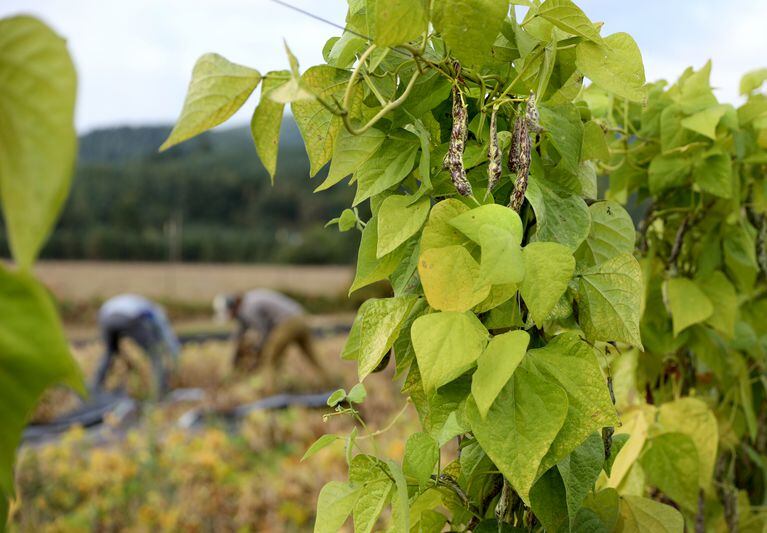
Caden Perry / OPB
There’s the Whipple, a creamy borlotti with burgundy-red skin, light pink speckles and mysterious provenance (according to lore, it either arrived with pioneers or with a family who relocated to Oregon after working with Dr. Martin Luther King Jr.). Then you have the Beers, a pale tan and yellow bean with a purplish-brown hilum (the technical name for the bean’s belly button), brought from Nebraska in 1895 by Charles and Priscilla Beers and slowly adapted to life near the Oregon Coast. The predominant bean used by the canning industry from the 1930s-1970s, the variety known as Oregon giant was thought to be lost until it was resurrected by a dedicated seed saver in Foster, Oregon, and reintroduced by Adaptive Seeds a few years ago.
Oregon’s latest local bean boom
Heirloom beans have soared in popularity over the past two decades, thanks in no small part to the advent of the Instant Pot countertop pressure cooker. The appliance modernized the bean pot of old, turning what had been a two-day cooking process to one that could be accomplished in an hour. Dry beans suddenly became a versatile weeknight meal option.
The local bean boom was also invigorated by growers like Anthony Boutard, whose Ayers Creek Farm produced the gold standard of comestibles, appreciated mainly by the Northwest’s top chefs and die-hard home cooks with a generous grocery budget. (The Boutards sold Ayers Creek Farm in May 2022 and relocated to the Finger Lakes area of New York to be closer to their grandchildren, but are still growing beans just for kicks. They brought Otello’s Pebble and some pole borlotti with them, and knowing Boutard, it won’t be long before new varieties with Oregon genes emerge in western New York.)
And there’s Steve Sando, who founded Rancho Gordo in 2001 and who considers Boutard a personal hero.
A decade after Rancho Gordo was born, artisanal bean growers sprouted up around the West. They tend to be more conscientious stewards of the land than large-scale growers and cultivate better relationships with Indigenous bean growers in the United States and Mexico, allowing farmers to maintain ties to their traditional foodways and be fairly compensated with a livable wage.
Most heirloom growers like Sando focus on flavor over productivity, caring less about the bottom line. Fussy heirloom beans are laboriously picked by hand instead of machine-harvested, and as a result, these beans are among the most expensive you can find anywhere. (Though even at their highest price, beans are one of the most affordable foods you can eat.)
“Growing heirloom beans is a labor of love,” chuckles Sando. One heirloom dearest to Sando’s heart is Marcella (named for legendary Italian cookbook author Marcella Hazan), a tender and thin-skinned cannellini variety grown from heirloom Sorana seed stock and adapted to life on the West Coast; some of that crop is grown in Oregon and Washington.
Across the West, a changing climate has impacted crops, including beans, but Rancho Gordo increasingly turns to growers in Oregon because of the heightened demand for heirloom beans — as of August 2023, its Bean Club has 22,000 members and another 17,000 on the waiting list.
Building a better green bean in the lab
With an eye toward disease resistance, drought tolerance, higher nutritional content and better flavor and texture, today’s breeding programs at Oregon State University are setting out to make the future’s heirlooms — using germplasm from antique varieties.
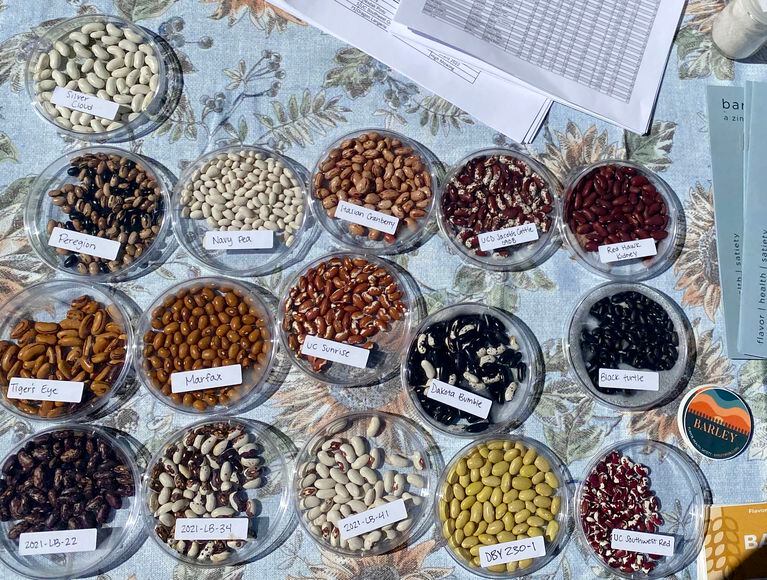
Heather Arndt Anderson / OPB
Modern crop scientists and organic chemists are building on decades of research into better understanding and improving bean varieties. Researchers at OSU have been unlocking the secrets of the unique flavor of a Blue Lake green bean since the 1960s, and state-of-the-art molecular techniques get scientists closer than ever to fully understanding what makes fitter, stronger plants with superior flavor — the best of both worlds.
Once a new variety is bred, it’s tested in the field to see how it does in different regions. When OSU professor of crop science Jim Myers grades the green beans he’s trialing, he’s primarily comparing quality and yield: how big the pods are, how many beans the plants produce despite challenges like white mold or a heat wave. Whereas dry beans for the niche heirloom market have dozens (if not hundreds) of varieties to work with, the Blue Lake (or OR5630) is the benchmark to which all new green bean varieties are compared in trials.
Most bean lovers probably don’t worry about things like how much a pod shatters in the field or how consistently dappled the seeds are, and when it comes to what’s important in a bean, Myers is just like us: He wants it to taste good.
What’s his favorite way to eat green beans?
“I don’t like green bean casserole!” he laughs. “I like them cooked Southern-style, with a little bacon, black pepper and onion, like soul food. And unlike most people, I like the texture of canned green beans.”


